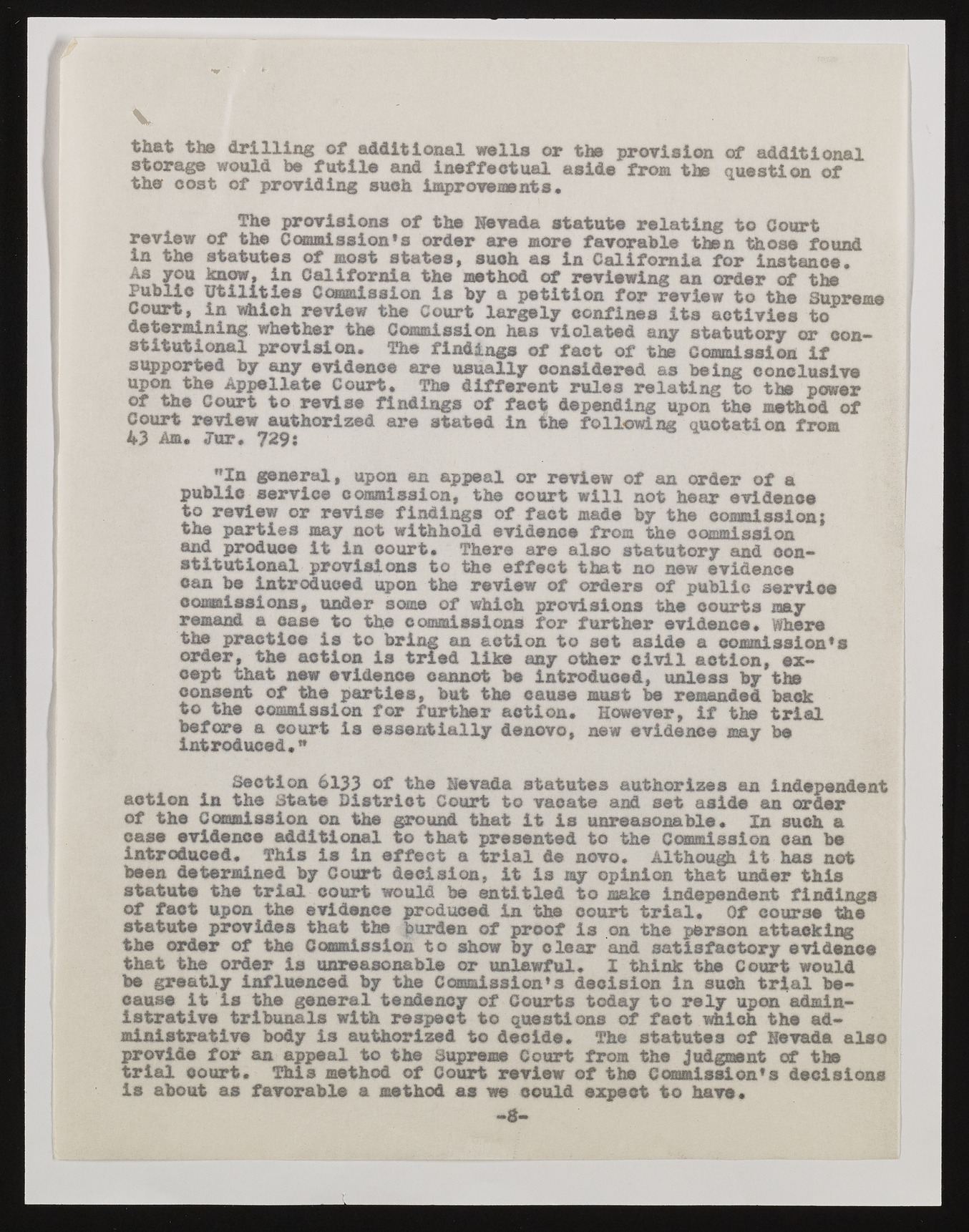Copyright & Fair-use Agreement
UNLV Special Collections provides copies of materials to facilitate private study, scholarship, or research. Material not in the public domain may be used according to fair use of copyrighted materials as defined by copyright law. Please cite us.
Please note that UNLV may not own the copyright to these materials and cannot provide permission to publish or distribute materials when UNLV is not the copyright holder. The user is solely responsible for determining the copyright status of materials and obtaining permission to use material from the copyright holder and for determining whether any permissions relating to any other rights are necessary for the intended use, and for obtaining all required permissions beyond that allowed by fair use.
Read more about our reproduction and use policy.
I agree.Information
Digital ID
Permalink
Details
More Info
Rights
Digital Provenance
Publisher
Transcription
% f; ? that the drilling of additional wells or the precision of additional storage would be futile and ineffectual aside from tbs question of the cost of providing such improvements. The provisions of the Nevada statute relating to Court review of the Commission’s order are more favorable then those found in the statutes of most states, suoh as in California for instance. As you knew, in California the method of reviewing an order of the Public Utilities Commission is by a petition for review to the Supreme Court, in which review the Court largely confines its activies to determining whether the Commission has violated any statutory or constitutional provision. The findings of fact of the Commission if supported by any evidence are usually considered as being conclusive upon the Appellate Court. The different rules relating to the power of the Court to revise findings of fact depending upon the method of Court review authorized are stated in the following quotation from 43 Am* Ju t . 7 2 9s wIn general, upon an appeal or review of an order of a public service commission, the court will not hear evidence to review or revise findings of fact made by the commission; the parties may not withhold evidence from the commission and produce it in court. There are also statutory and constitutional provisions to the effect that no new evidence can be introduced upon the review of orders of public service commissions, under some of which provisions the courts may remand a case to the commissions for further evidence. Where the practice is to bring an action to set aside a commission’s order, the action is tried like any other civil action, except that new evidence cannot be introduced, unless by the consent of the parties, but the cause must be remanded back to the commission for further action. However, if the trial before a court is essentially denovo, new evidence may be introduced.** Section 6133 of the Nevada statutes authorizes an independent aetion in the State District Court to vacate and set aside an order of the Commission on the ground that it is unreasonable. In such a case evidence additional to that presented to the Commission can be introduced. This is in effect a trial de novo. Although it has not been determined by Court decision, it is my opinion that under this statute the trial court would be entitled to make independent findings of fact upon the evidence produced in the court trial. Of course the statute provides that the burden of proof is on the person attacking the order of the Commission to show by clear and satisfactory evidence that the order is unreasonable or unlawful. £ think the Court would be greatly influenced by the Commission’s decision in suoh trial because it is the general tendency of Courts today to rely upon administrative tribunals with respect to questions of fact which the administrative body is authorized to decide. The statutes of Nevada also provide for an appeal to the Supreme Court from the judgment of the trial court. This method of Court review of the Commission’s decisions is about as favorable a method as we could expect to have* —8—

